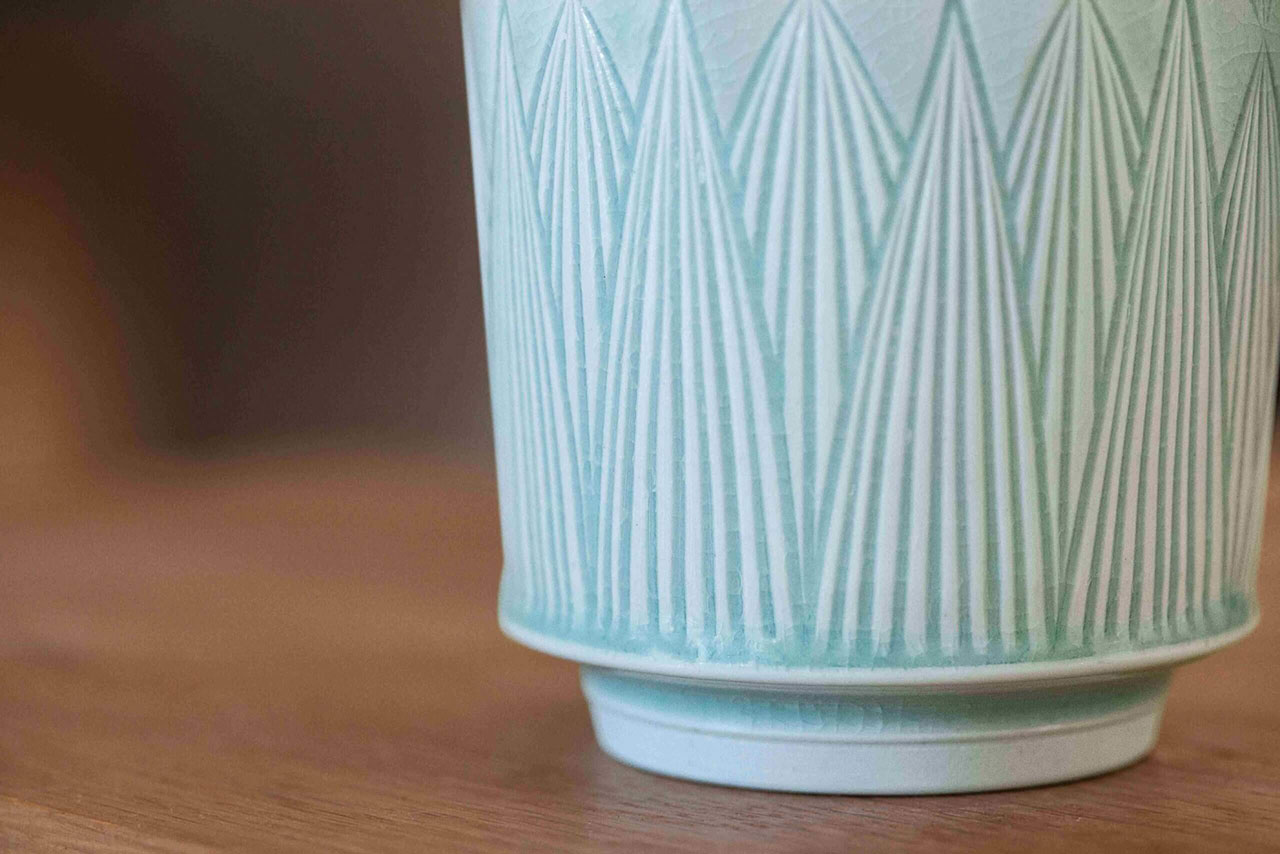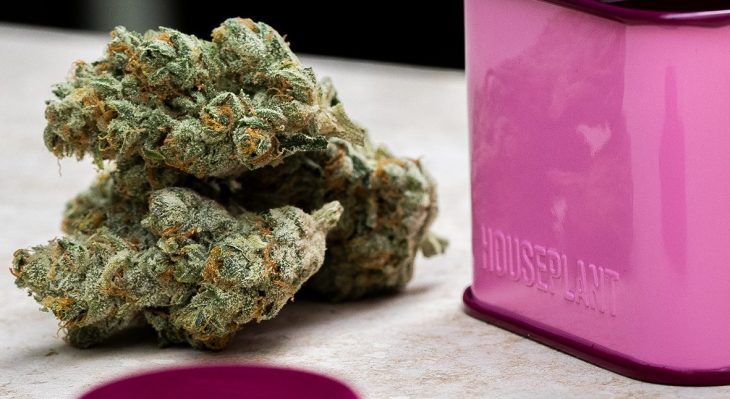I was annoying Seth Rogen. We had just started the interview, and while he politely answered my questions, he was growing tired of talking about his celebrity status. He was more interested in discussing how Houseplant, the company he co-founded, is succeeding by overcoming countless regulatory hurdles. To him, that success has little to do with the Seth Rogen brand.
“It’s not like I’m a real celebrity. It’s not like Chris Evans is behind this,” Rogen said, laughing. “On the grand scale, celebrities are very low on the pecking order. I don’t even know if I am a celebrity since I haven’t been in a Marvel movie.”
I spoke with Rogen, CEO Mike Mohr and chief commerce officer Haneen Davies at TechCrunch Disrupt. Houseplant launched in March with two product categories: “House,” as in, home goods, and “Plant,” as in weed. One is highly regulated by the federal government and social media companies, and the other is not.
“We approached [building the brand] in a way that nobody else has,” Davies said. “I think the merger of House and Plant is what’s going to help us establish a brand name that goes beyond the limiting restrictions you have to abide by to communicate cannabis.”
From pot to pottery
Look at Houseplant’s Instagram presence, and their strategy is obvious. The company has two accounts: One for the House side and one for the Plant side. One account has ashtrays and lighters, and one account has the pot. The account with just lifestyle items has twice as many followers as the pot account.
The company’s home goods line is expanding, too, and soon it will sell lamps, furniture and more. Why? Because these household items are not censored by social media companies and let the company tell its story without restrictions.
“We’ve sold house goods in all 50 states at this point,” Seth Rogen explained. “That’s us, developing a relationship and trust with customers in places where weed is not legal yet.”
“That’s the ethos of our launch,” said Davies. “You can talk about house goods the way you can talk about any product, and to us, they’re very much linked to cannabis and a cannabis lifestyle. But we can gain the trust of a national audience and be in many homes across the nation while we wait for cannabis to follow.”
Rogen explained the problem faced by every cannabis company. “How do you convey your message in a highly regulated industry and have the audience not perceive that you are jumping through a million regulatory hoops while conveying that message,” he said.
As in, how do you work within the rules without looking like you’re working within the rules?
Content from cannabis and hemp operators is heavily restricted on social media. Companies have to navigate within an ever-changing framework, and each social media company has different rules. Broadly speaking, it’s challenging to reach new audiences when operating within these restrictions, as the algorithms often limit the spread of cannabis content.
Post the wrong content and a company risks getting banned or restricted. For example, pictures of buds and plants are generally not allowed. This is one of the reasons Houseplant began to offer lifestyle products alongside the weed. On the other hand, there are no restrictions on pottery content.
“There’s a lot of stuff that you can and cannot do,” Rogen said about messaging the story of a cannabis brand.
“The limitation of production is a box everyone has to work in, and those who thrive were the ones who found ways to make those obstacles not seem like obstacles. Sometimes a box is a good thing to work in because it forces you to be more creative.”
The team landed on launching the company with three strains of weed and four home goods items: an ashtray designed by Rogen, vinyl box sets and two tabletop lighters. Everything is gorgeous — from the buds to the lifestyle items — so much so that Architectural Digest covered the lighters and ashtray. Since March, the company has released several new home good products, and they’re just as beautiful, including a set of cups and ashtrays designed by noted ceramist Adam Field.
Rogen notes that these items do more than create another revenue stream for the business.
“At the same time, it’s de-stigmatizing weed,” Seth said. “It’s showing that weed products can be beautiful and deserve to be in Architectural Digest. They don’t just belong to, you know, the person selling you rolling papers at the bong shop. They don’t have to be tie-dyed or rubber. They can be something you’re proud to display in a home that you’re proud to have. I think it’s nice because there’s a lot of things serving one another.”

Image Credits: Houseplant
From Canada to the States
This isn’t Houseplant’s first go-around. The company launched in Canada in 2019 but exited the Canadian market in April 2021. Mohr explained how Canada’s regulations shaped Houseplant ahead of its launch in the United States.
[Cannabis] is a highly regulated sector and environment, and the rules are different at the federal level and state level,” Mike said. “We’re coming off of a few years of operating in Canada where the rules are completely different. And they treat cannabis more like a pharmaceutical product than a recreational product. That pushed us to think about things differently, and come up with strategies like selling home goods where we’re not fighting for the same cannabis consumer audience that all cannabis brands are competing for.”
Houseplant employs 22 people and sells its marijuana in 25 California dispensaries. Mohr says the company is looking to expand to other states though it’s exploring bringing beverages to these markets before flower.
Current regulations in the United States make it hard for cannabis brands to launch in different states. Most of the time, cannabis sold in a particular state has to be grown in that state. Houseplant prides itself on the quality of its buds, and as I learned during this interview, the company has deep relationships with cultivators throughout California.
Houseplant does not own the grow facilities. Instead, it outsources the cultivation to third-party growers. “There’s a lot of weed out there,” Rogen said, speaking to the mass amounts of high-quality cannabis grown in California. Mohr agrees, saying, “And that’s why we outsource our growing. None of us are farmers or cultivators. There are exceptional ones here [in California]. And it’s our business to find the absolute best of them and work with them to deliver that top-quality product.”
“We’ve made sure we have giant, beautiful buds in our tins, and we only pick strains that have giant, beautiful buds,” Rogen said at the top of the interview. “We talked to dispensaries, and we’re like, ‘Is there any other brand that is emphasizing making sure that the experience is above the expectations of someone like me?'”
“And that was important to me,” he said. “As someone who buys tons of weed and smokes a ton of weed, I like to open the container and see big, giant, pretty buds.”
There have been hiccups since launching in March, and the company had to redesign its packaging. It was hard to open. The tabs to open the container were so troublesome, Seth took to Instagram to give tips on opening.
CCO Haneen Davies says one of their biggest learnings since launching was the need to pay attention to details. “Consumers see it. They notice it, and it makes a difference,” she said.
Houseplant has a deep product development pipeline for its home goods. The company is expanding the offering and will soon offer new products, such as an articulating lamp with an ashtray in the base. Seth came up with this idea, saying the company is getting into more functional products like grinders, rolling accessories and furniture. And, of course, Houseplant will continue to offer pottery, too.

